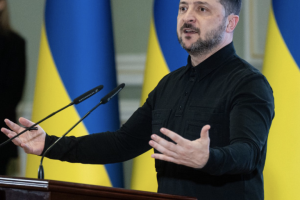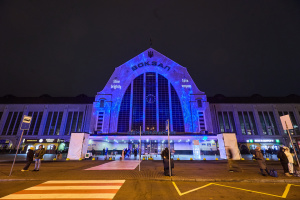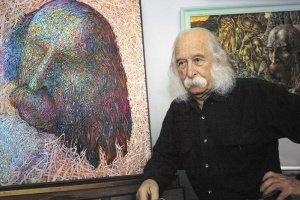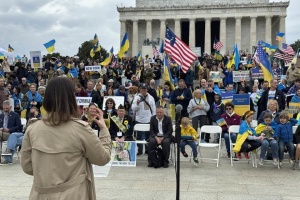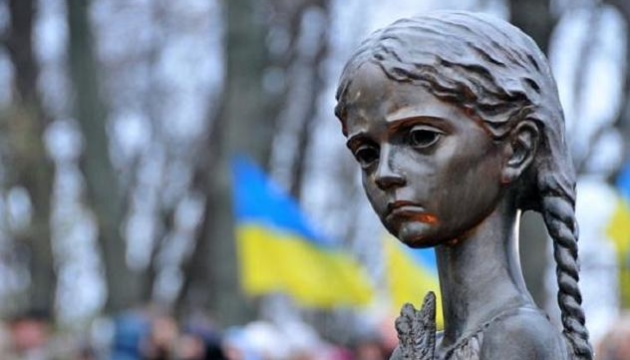
Holodomor 1932 – 1933 and the Russo-Ukrainian war
Modern Russian war criminals are trying to repeat in Ukraine what their predecessors already did: total control, terror, deportations, seizure of property and food. But this time, a strong opponent stands in their way, able to fight back and break the aggressor’s plans.
The Center for Strategic Communication tells about the historical lessons of the events of the last century, the consideration of which allows countering the enemy successfully.
Why did the Holodomor become possible?
The Soviet genocide of Ukrainians is a direct consequence of the loss of statehood. Having destroyed the Ukrainian People’s Republic, the Bolsheviks proclaimed the power of the Soviets in Ukraine, and created a puppet state entity — the Ukrainian Socialist Soviet Republic (since 1937 — the Ukrainian Soviet Socialist Republic).
Due to the loss of their own statehood, Ukrainians lost their foreign political subjectivity for decades (Moscow spoke on behalf of all Soviet citizens in the international arena) and institutions that could protect their interests. The leadership of Soviet Ukraine diligently implemented all the directives of the Kremlin.
Even before the creation of the USSR, when the Ukrainian Socialist Soviet Republic formally remained an independent state, a system of legalized robbery of peasants — a “food dictatorship” with prodrazverstka — was introduced in Ukraine on the Russian model. In the years 1921-1923, when the Ukrainian peasants were starving, the Bolsheviks fed the Red Army and the proletarian population of Petrograd and other cities of Russia, which were loyal to the authorities, with the bread Ukrainians raised.
After 10 years, the crime was committed again. But on a much larger scale.
Threat and resource. Common perception of Stalin and Putin that Ukrainians have
Collectivization and the Holodomor it led to were needed by the Soviet dictator to accomplish several tasks:
● creation of a faultless and fully state-controlled system for pumping food from the village, primarily grain;
● obtaining a resource for forced industrialization — rapid development of heavy industry and military-industrial complex. The USSR was receiving the currency for the purchase of equipment and technologies by selling the goods seized from Ukrainian peasants;
● “re-education” of the Ukrainian peasantry, which with its “private-ownership psychology” did not fit into the new society and prevented from building communism;
● elimination of the threat of “Ukrainian bourgeois nationalism” and independent aspirations of Ukrainians, bringing them into absolute submission to the regime. While Ukrainian peasants were dying of artificial hunger, the repressive machine methodically destroyed the Ukrainian intellectual elite: writers, artists, scientists, and clergy. The same fate befell party functionaries and government officials from among the national communists.
So, for the Stalinist regime, Ukrainians were both a threat that needed to be neutralized and a resource that the power used to its advantage.
The approaches of the current leadership of Russia to resolving the “Ukrainian issue” have a lot in common with their predecessors:
● firstly, it is an attempt to punish Ukrainians for their desire for freedom. In the 1930s, the memory of the UPR was still alive. In Ukraine, anti-Bolshevik uprisings regularly occurred, which ceased only after the Holodomor. The modern Kremlin perceives the aspiration of Ukrainians to build their own independent state heading for the EU and NATO as a threat;
● secondly, the dehumanization of Ukrainians through propaganda. Over 90 years, “kurkuls,” “Petliura’s supporters” and “bourgeois nationalists” have turned into “Nazis,” “Fascists,” and even “Satanists,” who are equally “terrible” for the Kremlin;
● thirdly, the Kremlin views Ukrainians as a resource. This is evidenced by both forced mobilization in the occupied territories and the deportation of the population to the depths of Russia to solve the demographic problems of the aggressor state. In 1939, Ukrainians who survived the Holodomor were mobilized into the Red Army and sent to conquer Finland;
● finally, now, like 90 years ago, the Kremlin regime is committing genocide against Ukrainians. It tries to destroy those who can resist the invaders, intimidate the rest, and provoke a humanitarian catastrophe.

A peasant family after de-kulakization next to a house destroyed by the Bolsheviks (Udachne village, Donetsk oblast, early 1930s)
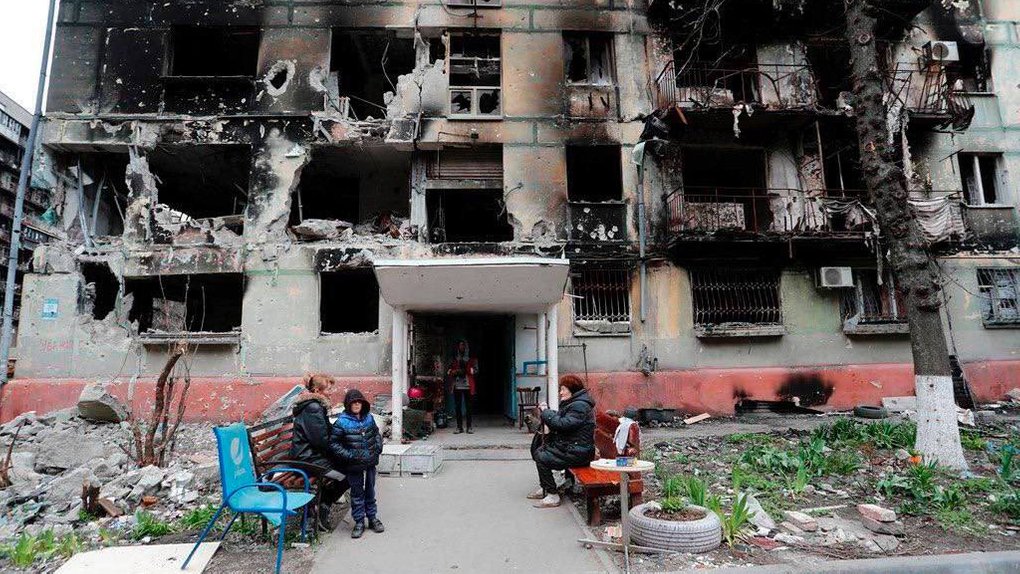
Residents of Mariupol next to a destroyed house (source: Mariupol city council)
But destroying millions of Ukrainians, the Stalin regime, however, did not question the existence of this nation and did not encroach on the status of the Ukrainian SSR. Today’s Russian leadership evidently considers it a mistake.
On the occupied territories, they wipe out every mention of Ukraine: they destroy national symbols, remove books from libraries, and ban the Ukrainian language in schools. The illegal annexation of four regions of Ukraine on September 30 was entitled “reunification of eternally Russian lands.”
It is clear why Putin hates Ukraine’s sovereignty within the USSR so much. It was the status of a Soviet republic that later allowed Ukraine to obtain a status of a UN founding country and to leave the USSR relatively easily.
Why are Ukrainians able to win today?
This is far from the first time that Russia tries to force Ukrainians into submission. But today, Ukraine has some of the best starting points in history helping it beat the enemy. This includes:
● our own country, making Ukrainians a full-fledged agent within international politics;
● strong Armed Forces — 90 years ago, the insurgent units were fighting with all their might, but the result of their fight against a full army was sadly predictable;
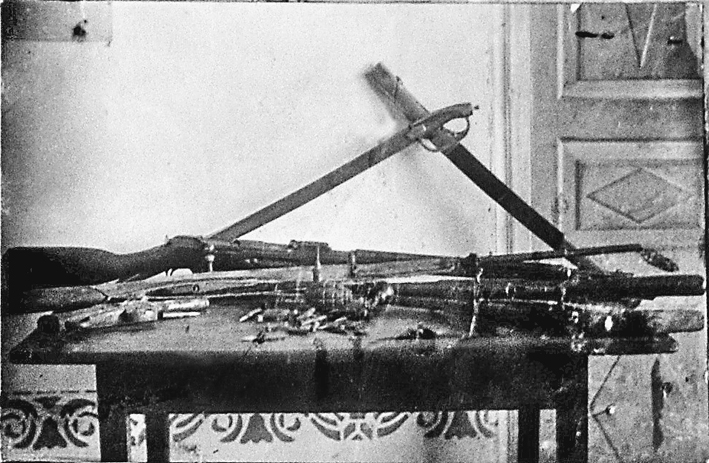
Weapons seized from insurgent fighters (1932)
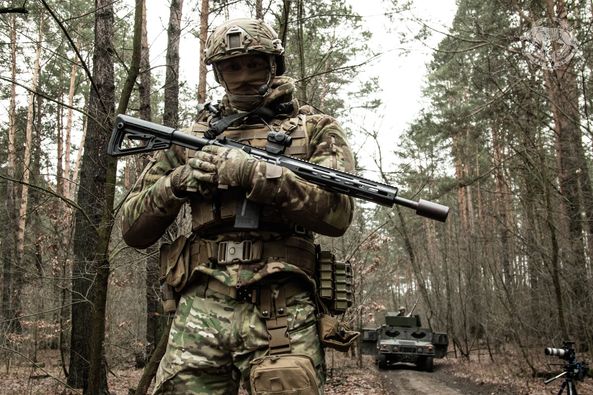
A soldier of the Special Operations Forces under the Armed Forces of Ukraine (Source: SOF)
● strong international support — the most developed countries worldwide have lent a helping hand to Ukraine, supplying modern weapons and helping to maintain the economy;
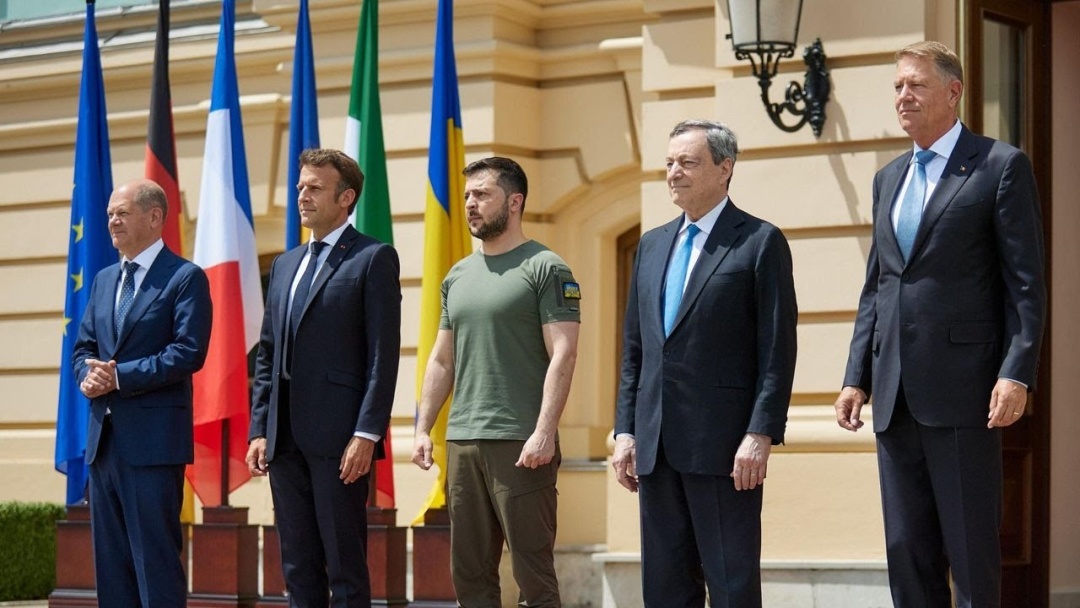
Leaders of European countries in Kyiv, June 16, 2022. Source: Office of the President of Ukraine)
● effective communication — today, people in the entire world know about the Russian aggression and root for Ukraine. During Holodomor, Ukraine was in information isolation and only some stories about the tragedy got out thanks to people like journalist Gareth Jones.

Gareth Jones’ article about the Kremlin-organized famine in Ukraine in Los Angeles Examiner (Source: garethjones.org)
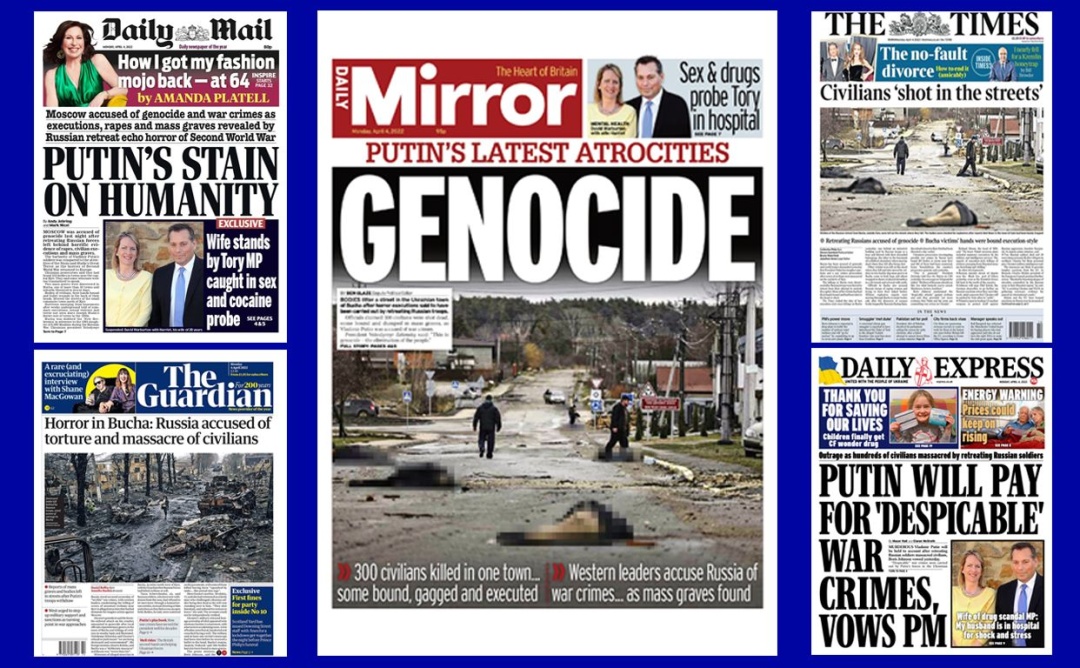
Materials about the Bucha tragedy on the first pages of global outlets
Remembering the effectiveness of using hunger as a method of terror, the Kremlin is once again trying to use it as a weapon. Not only against Ukrainians in the occupied territories, but against hundreds of millions of people in African and Asian countries, who depend on food supplies from Ukraine. Blocking export from Ukraine even after the grain deals were signed, the Russians are trying to blackmail the world with the threat of global famine.
Giving the order to start the so-called “special military operation,” Putin tried to fix “errors of the past,” which led to “the biggest geopolitical catastrophe,” i.e., the collapse of the USSR. But the Kremlin dictator failed to realize that Ukrainians did learn something from history. The “Memorial Candle” campaign, launched in the 2000s, has become public in recent years: people publish pictures of a candle on the windowsill next to themselves.
Ukrainians gave a clear signal: they are ready not just to mourn the dead, but they will no longer let Russia kill them and go unpunished. And the subsequent events proved they were very serious about it.
Center for Strategic Communication and Information Security

